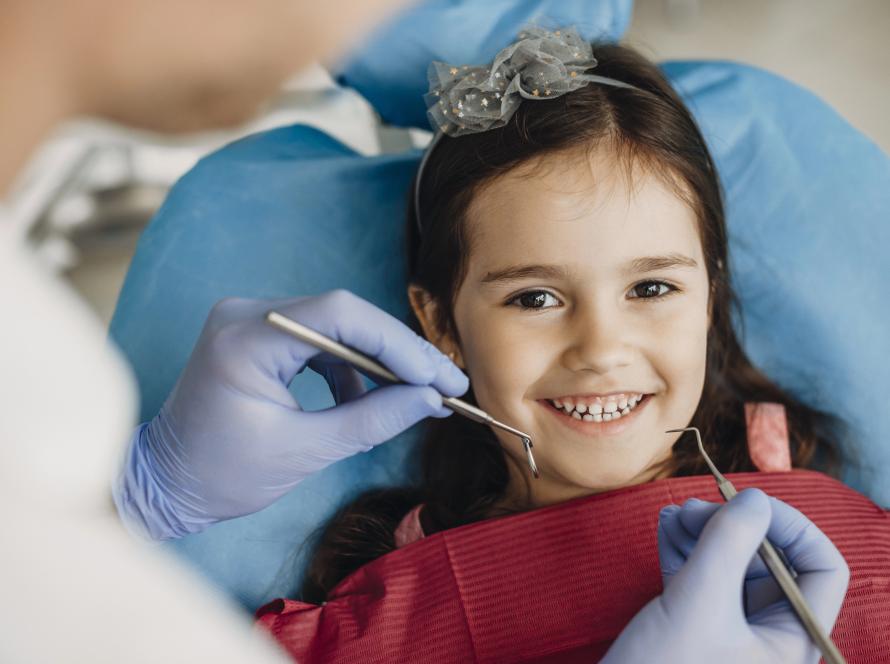Seeing your child’s first loose tooth can bring a mix of excitement and uncertainty. For parents, it’s not just about waiting for the Tooth Fairy—it’s a key moment that signals the start of their child’s permanent smile. This stage is more than a rite of passage; it’s an important time to reinforce kids’ oral care habits that will protect those new adult teeth for years to come. From recognizing when a tooth is ready to come out to knowing how to care for the gap it leaves behind, expert guidance can make all the difference. Here, Toronto Kids Dental offers practical advice and answers the most common questions parents have when their children start losing baby teeth. (Source: HealthyChildren.org, When Children Begin to Lose their Baby Teeth, Last Updated 6/1/2007, Source, Caring for Your School-Age Child: Ages 5 to 12 (Copyright © 2004 American Academy of Pediatrics), https://www.healthychildren.org/English/healthy-living/oral-health/Pages/When-Children-Begin-to-Lose-their-Baby-Teeth.aspx?_gl=1*shelkl*_ga*MTMzNzEyODE5Mi4xNzMyMzg1MzM1*_ga_FD9D3XZVQQ*MTc0NjE2MTExMi41LjEuMTc0NjE2MTE3OS4wLjAuMA.. ).
Losing baby teeth is an exciting yet important milestone in a child’s development, typically starting around the age of six. Most children lose their baby teeth in the same order they grew in, starting with the lower central incisors; the process continues with the upper central incisors.
“Parents often wonder if the timing of tooth loss is normal,” says Toronto Kids Dental. “While most children start around age six, some may begin a bit earlier or later. What’s crucial is the pattern: if teeth are falling out in a typical sequence and your child’s development is otherwise normal, there’s usually no cause for concern.”
Recognizing When It’s Time for a Tooth to Come Out
A loose tooth will usually wiggle for weeks or even months before it finally falls out. While this can be uncomfortable for kids, it’s a natural process.
“One tip we share with parents is to let children take the lead when it comes to wiggling loose teeth,” Toronto Kids Dental advises. “Encourage gentle wiggling with clean fingers or their tongue. Removing a tooth prematurely can lead to pain and increase the risk of infection.”
What to Do After a Tooth Falls Out
After a baby tooth falls out, it’s common for a bit of bleeding to occur. Applying gentle pressure with medical gauze or a clean cloth usually stops it quickly.
“We also recommend parents keep an eye on the socket for any prolonged bleeding or signs of infection like swelling or pus,” Toronto Kids Dental adds. “A simple saltwater rinse can help keep the area clean as the gum heals. If bleeding lasts longer than a few hours, it’s wise to check in with your children’s dentist.”
When to Be Concerned About Tooth Loss
Although losing baby teeth is a natural part of growing up, premature loss due to trauma or decay can lead to issues with the spacing or alignment of the permanent teeth.
“Premature loss of baby teeth can sometimes cause the surrounding teeth to move and shift into the empty space, which can crowd the incoming adult tooth,” says Toronto Kids Dental. “If a tooth is knocked out early, parents should schedule a visit to their kids’ dentist. We can discuss whether a space maintainer or other intervention is needed to protect long-term oral health.”
Keeping Incoming Adult Teeth Healthy
Newly erupted adult teeth may look slightly yellow compared to baby teeth, which is normal. These new teeth are also more prone to cavities as their enamel continues to strengthen.
“We always remind parents that this is a critical time for kids’ oral care,” Toronto Kids Dental explains. “Adult teeth need extra protection, so keep up with twice-daily brushing using fluoride toothpaste and supervise until at least age eight to ensure good technique. A balanced diet that’s low in sugary snacks and drinks also makes a big difference.”
What If the Tooth Doesn’t Come Out?
In some cases, a baby tooth may stubbornly stay put, even when the adult tooth is pushing through. This can result in what’s commonly known as “shark teeth,” where a new tooth appears behind the baby tooth.
“This is a common concern we see in the clinic,” says Toronto Kids Dental. “In most cases, the baby tooth will loosen and fall out on its own. But if it remains firmly in place for a few months after the adult tooth has come in, it’s a good idea to have it evaluated. Sometimes, a simple extraction by a kids’ dentist can prevent future alignment issues.”
Fostering a Positive Attitude About Tooth Loss
Losing teeth can be a mix of excitement and anxiety for kids. Making it a positive experience—whether through a visit from the Tooth Fairy or a small reward—can help ease nerves and build healthy habits.
“We encourage parents to make losing teeth a fun and memorable part of growing up,” Toronto Kids Dental says. “It’s also a great opportunity to reinforce good kids’ oral hygiene habits and talk about how caring for their new adult teeth sets the foundation for a healthy smile for life.”
Navigating the loss of baby teeth is a crucial part of maintaining good kids’ oral hygiene and setting the stage for a healthy smile. With proper guidance and attention, parents can help ensure their child’s transition from baby teeth to adult teeth is smooth and worry-free. Regular visits to a trusted children’s dentist and daily care at home are essential in protecting those incoming adult teeth and promoting lifelong oral health. As always, Toronto Kids Dental is here to provide expert insights and support for every stage of your child’s dental development.


